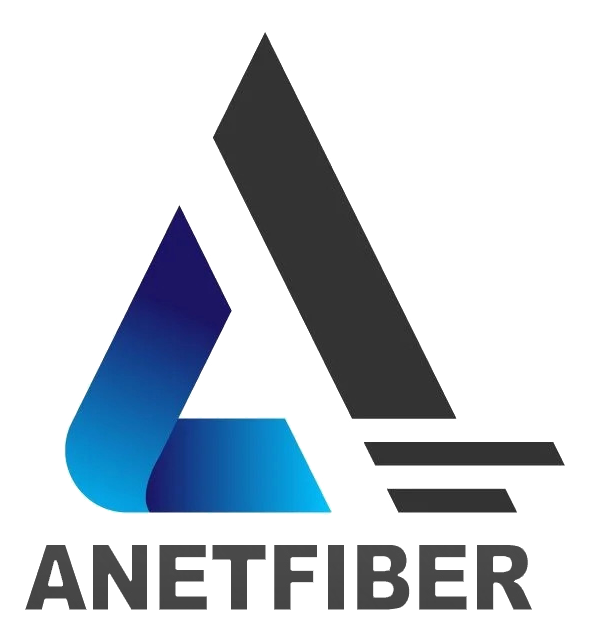The Crucial Role of Fiber Optics in 5G Network Infrastructure

Understanding the Basics of 5G and Fiber Optics
As technology continues to advance, the introduction of 5G has sparked significant interest and excitement. But what exactly is 5G, and how does it relate to Fiber Optics?
What is 5G?
The transition from 4G to 5G represents a monumental leap in wireless communication. Unlike its predecessor, 5G offers unparalleled speed, reduced latency, and increased connectivity. This evolution not only enhances mobile broadband but also paves the way for innovative applications such as autonomous vehicles and augmented reality.
The Evolution from 4G to 5G
The shift from 4G to 5G signifies a transformative change in telecommunications infrastructure. It involves a substantial upgrade in network architecture, enabling faster data transmission and more reliable connections.
Key Features of 5G Technology
5G technology boasts several key features that distinguish it from previous generations. These include ultra-low latency, higher data rates, massive device connectivity, and improved spectral efficiency.
The Role of Fiber Optics in Telecommunications
Fiber optics play a crucial role in enabling high-speed data transmission across vast distances within telecommunications networks.
How Fiber Optics Work
Utilizing thin strands of glass or plastic, Fiber Optics transmit data through pulses of light. This method allows for rapid data transfer with minimal interference or signal loss.
Advantages of Fiber Optics Over Traditional Cables
Compared to traditional copper cables, Fiber Optics offer numerous advantages such as higher bandwidth capacity, immunity to electromagnetic interference, and greater reliability over extended distances.
The Backbone of 5G: How Fiber Optics Support 5G Networks
In the realm of telecommunications, the Fiber Optic backbone serves as a critical infrastructure component, facilitating the seamless operation of 5G networks.
Fiber Optic Backbone for 5G
High-Speed Data Transmission with Fiber Optics
The utilization of Fiber Optics in the backbone of 5G networks enables unparalleled high-speed data transmission. By leveraging the inherent properties of light pulses through optical fibers, data transmission speeds in 5G can reach unprecedented levels, meeting the demands of modern connectivity.
The Need for Speed: Data Transmission Speeds in 5G
The demand for rapid and efficient data transmission speeds in 5G networks is driven by the exponential growth of connected devices and the increasing reliance on real-time data processing. With the support of Fiber Optics, 5G networks can deliver remarkable data speeds, empowering applications that require instantaneous responsiveness and uninterrupted connectivity.
5G Network Deployment and Fiber Optics
Challenges in 5G Network Deployment
The deployment of 5G networks presents multifaceted challenges, including infrastructure scalability, spectrum allocation, and network densification. These complexities necessitate robust solutions to ensure widespread network coverage and optimal performance.
How Fiber Optics Address These Challenges
Fiber Optics offer a compelling solution to address the challenges associated with 5G network deployment. Their ability to transmit vast amounts of data over extended distances with minimal signal degradation aligns perfectly with the requirements for deploying a comprehensive and reliable 5G infrastructure. Additionally, the scalability and flexibility of fiber optic technology provide a future-proof foundation for accommodating the evolving needs of advanced telecommunications systems.
Fiber Optics in 5G Networks: Meeting Infrastructure Requirements
As 5G technology continues to revolutionize the telecommunications landscape, the infrastructure requirements for supporting this advanced network are becoming increasingly paramount. The integration of Fiber Optics plays a pivotal role in meeting these demands, ensuring that 5G networks can deliver on their promise of high-speed connectivity and seamless operations.
5G Infrastructure Requirements
Capacity and Coverage Needs for 5G
The deployment of 5G networks necessitates substantial capacity and extensive coverage to accommodate the surge in data traffic and the proliferation of connected devices. With the exponential growth of data consumption and the emergence of bandwidth-intensive applications, such as virtual reality and ultra-high-definition video streaming, there is an unprecedented demand for network capacity and coverage.
Role of Fiber Optics in Meeting These Needs
Fiber optics in 5G networks serve as the linchpin for meeting the capacity and coverage needs essential for 5G infrastructure. The inherent high bandwidth capabilities of fiber optic cables enable them to support massive data throughput, ensuring that 5G networks can handle the surge in data traffic without compromising on speed or reliability. Additionally, the extensive reach of fiber optic connections allows for widespread coverage, reaching even remote areas with robust connectivity.
5G Network Optimization with Fiber Optics
Enhancing Network Efficiency and Reliability
The integration of Fiber Optics into 5G networks brings about a paradigm shift in network optimization by enhancing efficiency and reliability. Fiber optics offer low latency transmission, minimizing delays in data delivery and response times. This capability is crucial for real-time applications like autonomous vehicles and telemedicine, where split-second decisions are imperative. Furthermore, fiber optics' immunity to electromagnetic interference ensures a stable network environment, reducing potential disruptions and downtime.
Future-Proofing 5G Networks with Fiber Optics
As technology continues to evolve at a rapid pace, future-proofing 5G networks is essential to ensure their longevity and adaptability. The integration of fiber optics provides a forward-looking approach to network infrastructure, offering scalability and flexibility to accommodate future advancements in telecommunications technology. By laying a robust foundation supported by fiber optics, 5G networks can seamlessly integrate upcoming innovations without requiring significant overhauls or investments.
The Future is Bright: 5G Technology Trends and Fiber Optics
As 5G continues to unfold, it brings forth a wave of transformative technology trends that are reshaping the telecommunications landscape. These emerging trends not only redefine connectivity but also underscore the indispensable role of Fiber Optics in supporting the evolution of 5G networks.
Emerging Trends in 5G Networks
The trajectory of 5G technology is marked by several compelling trends that are poised to revolutionize communication networks. One prominent trend is the convergence of 5G with edge computing, enabling data processing closer to the source, thereby reducing latency and enhancing real-time applications. Additionally, network slicing, a concept where a single physical network is partitioned into multiple virtual networks, allows tailored connectivity for diverse applications and user requirements. Moreover, the integration of massive MIMO (Multiple Input Multiple Output) technology promises enhanced spectral efficiency and network capacity, catering to the escalating demands for high-speed data transmission.
The Role of Fiber Optics in Supporting These Trends
Amidst these burgeoning 5G technology trends, Fiber Optics stands as an enabler that underpins their realization. The inherent high bandwidth capabilities of fiber optic cables align seamlessly with the data-intensive nature of edge computing and network slicing. By providing robust and low-latency data transmission over extended distances, fiber optics form the backbone for these trends to thrive. Furthermore, the deployment of massive MIMO systems can leverage fiber optics' ability to support increased connectivity without compromising on speed or reliability. As such, fiber optics emerge as an essential infrastructure component that fortifies the foundation upon which these innovative 5G trends can flourish.
5G Impact on IoT and Smart Cities
The convergence of 5G and Fiber Optics extends beyond traditional communication paradigms, extending its impact into realms such as IoT (Internet of Things) and smart city initiatives.
Enabling IoT with 5G and Fiber Optics
The synergy between 5G, Fiber Optics, and IoT heralds a new era of interconnected devices and sensor networks. With its ultra-low latency and high-speed connectivity, 5G empowers IoT applications to operate with unparalleled responsiveness and efficiency. Concurrently, fiber optics provide the robust infrastructure needed to support widespread IoT deployments by ensuring seamless data transmission across diverse environments. This symbiotic relationship between 5G-enabled IoT devices and fiber optic networks lays the groundwork for a connected ecosystem where information flows seamlessly across various endpoints.
Building Smart Cities with 5G Connectivity
Smart city initiatives harnessing the potential of both Fiber Optics and 5G are poised to redefine urban living through enhanced connectivity and resource management. The integration of 5G connectivity within smart city frameworks enables real-time monitoring, analysis, and decision-making processes across critical infrastructure such as transportation systems, energy grids, and public services. Meanwhile, fiber optic networks serve as the backbone for this interconnected web by providing reliable high-speed data transmission essential for powering smart city applications. Together, they form an intricate fabric that supports sustainable urban development while enhancing quality-of-life metrics for residents.
Real-World Applications: Fiber Optic Networks in 5G Deployment
In the realm of telecommunications, Fiber Optics are instrumental in facilitating the deployment of 5G networks and powering a myriad of real-world applications.
Fiber Optic Networks for 5G Applications
The integration of Fiber Optic networks is exemplified through successful case studies that underscore their pivotal role in enabling robust 5G deployments. For instance, in urban environments, fiber optic connections have been pivotal in establishing high-speed and low-latency connectivity for smart city initiatives. Additionally, within industrial settings, fiber optics have facilitated the implementation of advanced automation and real-time monitoring systems powered by 5G technology. These case studies demonstrate the seamless synergy between fiber optics and 5G, showcasing their collective potential to revolutionize diverse sectors.
Looking ahead, the future of 5G applications is inexorably linked to the capabilities of fiber optic networks. As emerging technologies such as augmented reality, virtual simulations, and remote robotic control become increasingly prevalent, the demand for ultra-fast and reliable connectivity provided by both Fiber Optics and 5G will continue to soar. The convergence of these technologies is poised to redefine how we interact with digital content, access information, and engage with immersive experiences.
Smart Cities and 5G Connectivity
Smart city initiatives leverage the symbiotic relationship between Fiber Optics, 5G, and IoT to drive transformative changes across urban landscapes.
Examples of Smart City Initiatives
Cities worldwide are embracing smart city initiatives that harness the power of Fiber Optics and 5G connectivity to enhance public services, optimize resource management, and improve overall quality of life for residents. From intelligent transportation systems that utilize real-time data for traffic optimization to environmental monitoring solutions that rely on high-speed data transmission for pollution control, smart cities are redefining urban living through interconnected infrastructure supported by fiber optics and 5G technology.
The Importance of Fiber Optics in Smart City Infrastructure
The significance of fiber optics in smart city infrastructure cannot be overstated. Its ability to provide high bandwidth capacity over extended distances forms the backbone for diverse applications within smart cities. Whether it's supporting autonomous vehicle communication systems or enabling seamless connectivity for public safety networks, fiber optics play a crucial role in ensuring that smart city initiatives operate efficiently and sustainably.
See Also
The Vital Role of Fiber Optics in 5G Connectivity
The Essential Role of Fiber Optic Framework in Telecommunications
5 Ways Fiber Optics Transform Cloud Technology
The Influence of Fiber Optics on Internet of Things (IoT) Connection


